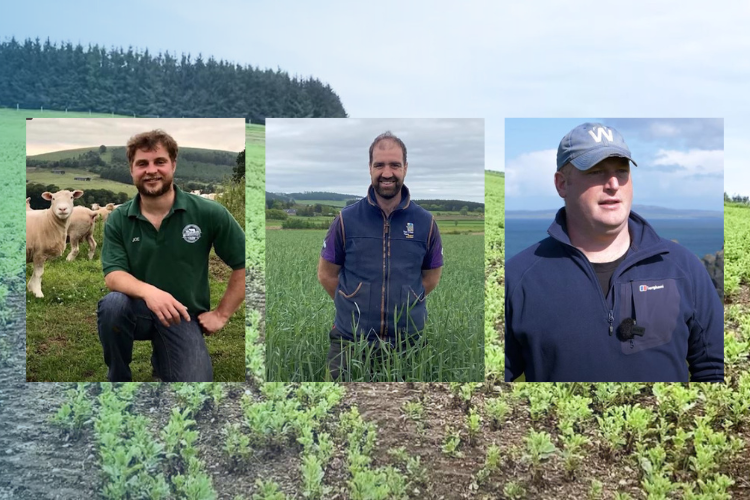Climate Resilience Case Study – Windshiel Farm
1 February 2024Joe Baker, Windshiel Farm, Scottish Borders
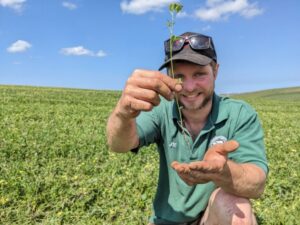 Windshiel is a 500 acre (202 hectares) family-run organic farm set on the edge of the Lammermuir hills, approximately 900 feet above sea level. At Windshiel, Joe Baker and his family manage 650 Lleyn ewes (inclusive of 100 hoggs lambed) and 62 Aberdeen Angus cows, with steers sold at 17 months. Calving starts in March and lambing starts April 8th.
Windshiel is a 500 acre (202 hectares) family-run organic farm set on the edge of the Lammermuir hills, approximately 900 feet above sea level. At Windshiel, Joe Baker and his family manage 650 Lleyn ewes (inclusive of 100 hoggs lambed) and 62 Aberdeen Angus cows, with steers sold at 17 months. Calving starts in March and lambing starts April 8th.
With a mix of light and medium soils, the farm has experienced drought issues in recent years. In addition, they are hesitant to buy feed as organic feed is expensive and it goes against their forage-based objectives. For these reasons, Joe has been experimenting with different forage options to maintain forage supply through the summer and keep the stock outwintered during the winter.
Mixed Species Swards (Sown under Arable Silage)
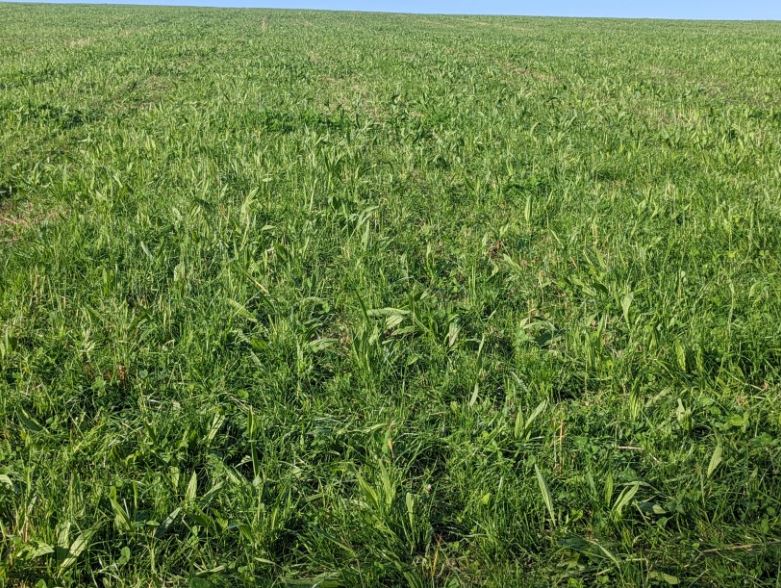
June 2023 was very dry, Joe sows new multispecies swards under spring sown arable silage (oats barley, peas and vetch) as the roots of the cereal crop help retain moisture in the soil and the crop keeps ground cover to prevent weeds taking over.
In the mix:
| Grasses | Herbs | Legumes |
|---|---|---|
| Ryegrass | Yarrow | Birdsfoot trefoil |
| Timothy | Plantain | White Clover |
| Cocksfoot | Chicory | Red Clover |
Lucerne
On April 20th 2023, they sowed 10 acres (2.5 hectares) of lucerne as an experiment to see whether higher protein forage can be grown for late pregnancy ewe rations.
Lucerne likes: well drained soil, high pH (>6.7), adequate molybdenum and distinct season transitions. It was very weedy in summer 2023 and time will tell its suitability for Windshiel.
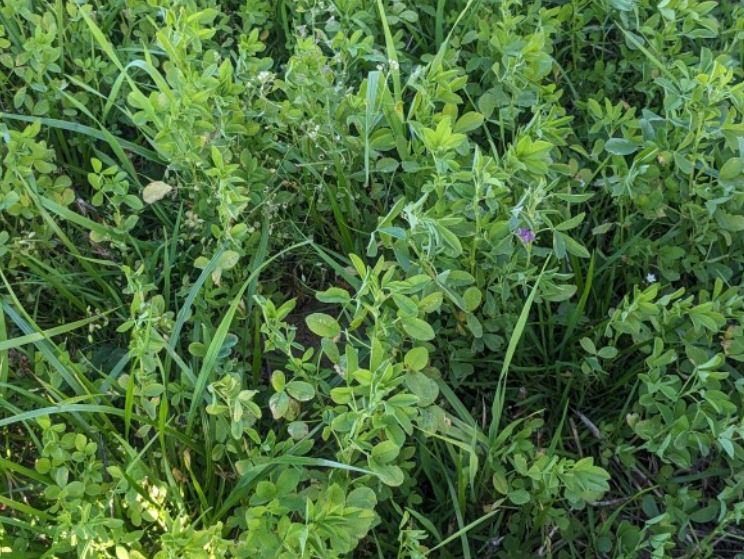
Adapting the Rotational Grazing
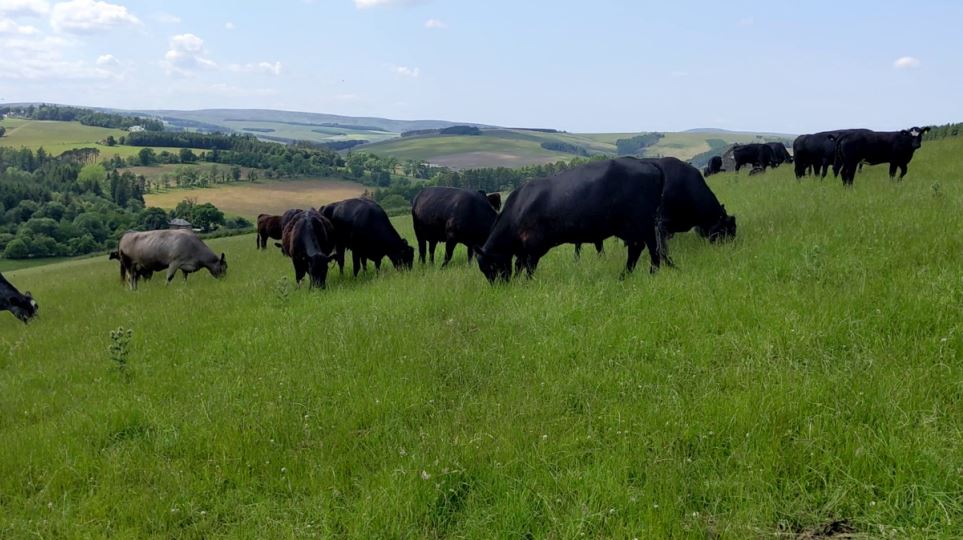
With a well-established rotational grazing system at Windshiel, Joe has been adapting slightly to improve drought resilience by increasing rest and subsequently the grass height pre-grazing and post-grazing.
Summer 2023:
- Paddock size: 9 acre (3.6 ha)
- Typical rest: 25-30 days
- Moving frequency: Up to one week
- Sheep mob size: 300 ewes
- Cow mob size: 35 cows and calves
Next year they would like to refine the grazing further by changing to a leader-follower system in which the sheep flock is followed by the cows and calves. This will enable them to allow the sheep to select for quality in front and the cattle will tidy up the grass behind them.
Pasture Cropping and Deferred Grazing
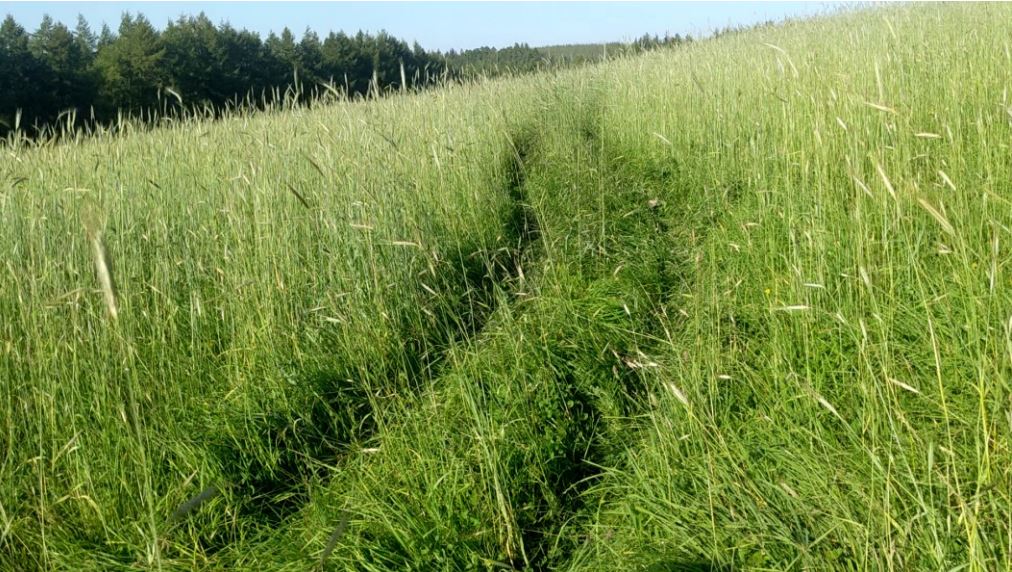
Additional pressure is placed on the farm to ensure that there in enough forage grown to sustain the flock and herd through the winter. Currently, the farm is very dependent on forage crops for wintering but this dependency leaves them vulnerable if the crop fails.
To spread the risk, they have been experimenting with forage rye direct drilled into the pasture and left for wintering. This method reduces ground disturbance and therefore improves soil moisture retention.
Going into the winter, as you can see on the photo, they had a bulk of forage which will sustain half the cow herd after they come off forage crops in March until Calving.
2023 Top Lesson at Windshiel
“Having diverse species within the fields and strategies across the farm spreads the risk when facing different weather extremes“
Vlog Series
To hear more about climate resilience strategies please view our vlog series, which features Robert and his beans and rye, along with another two farms, and how they have developed their systems.
Climate Resilience Vlogs | Helping farmers in Scotland | Farm Advisory Service (fas.scot)
Sign up to the FAS newsletter
Receive updates on news, events and publications from Scotland’s Farm Advisory Service

